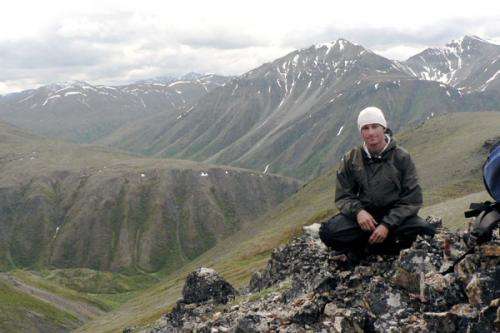A solo, 1600 km trek across Brooks' Range

"I've suffered so much. Why not suffer a little bit more and make it all worthwhile?" This was the mantra that saw John Cantor through his solo expedition across North America's Brooks Range.
The 27-year-old says he felt like giving up almost every day of his 1600 kilometre solo journey between Canada and the Alaskan coast, yet he refused to succumb to the exhaustion, anxiety and pain.
"For the first four days of the expedition there was a voice in my head constantly telling me to quit," says Cantor. "I threw up a dozen times during the first night just because I was so freaked out."
Cantor's three prior attempts at the expedition, which is considered one of the toughest in the world, had seen the young adventurer pull out within the first four days. This year, he was adamant he'd succeed. "It was a big evolution realising that freaking out in the Brooks Range is a perfectly natural thing. The first few times it happened I thought, 'Things aren't right; I need to get out of here'."
Now, having completed the trek, Cantor is the first Australian and the fifth person ever to do so. He even set a speed record for the traverse, completing it in 31-and-a-half days – a far cry from the 60 days he predicted.
"I've always liked pushing the limits and seeking out adventures, but it was more the fact that I felt like I had such a great and easy life that I really needed to challenge myself," he says, explaining his motivation for the expedition.
And Cantor certainly encountered his fair share of challenges. A mere five days into the hike he developed Achilles tendonitis (inflammation of the tendon at the back of the ankle). He was forced to survive on olive oil and protein shakes since he couldn't stop to eat solid food.
"If I stopped, the pain would just get worse so I couldn't really take breaks," says Cantor. "Aside from stopping to purify water, in the average 11- to 14-hour day hiking I wouldn't stop for more than 30 seconds or so."
On the eighth day, Cantor became lost in a valley and had to cross a number of dangerous snow bridges. "I didn't know if I was going to punch through the ice at any minute, and if I had done that I would almost certainly have died." Just a week after he returned to Australia, Cantor discovered a South African trekker had died in the Brooks Range after stepping on loose rocks and falling into a river.
Having lived to tell his extraordinary tale, Cantor is eager to share it. The Master of Media Arts and Production graduate is planning to make a feature-length documentary about the expedition, using footage captured on his Sony NEX-VG20 digital camera. He's also writing a book and hoping to move into motivational speaking with his talk titled: 'Goals you shouldn't be able to achieve'.
"The biggest turning point in my journey was actually when I no longer believed in myself," says Cantor. "That was when I sat down and said to myself, 'Okay, I can't traverse the Brooks Range, what do I have to do to be able to cross it?'. I set myself daily goals and instead of seeing the expedition as one great challenge, I broke it down into little battles.
"Everyone has a Brooks Range out there. It's not necessarily a mountain range in Arctic Alaska, but just something they feel they might not be able to do. If I can help them find that I will be really happy."
Provided by University of Technology, Sydney


















